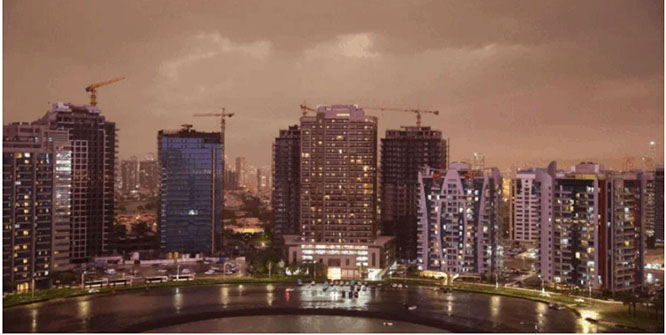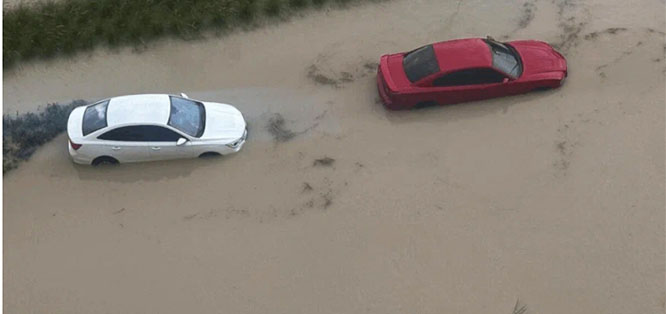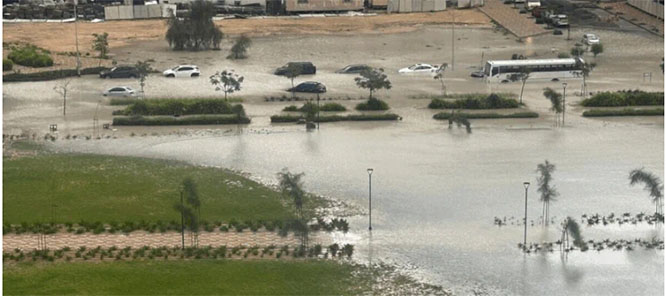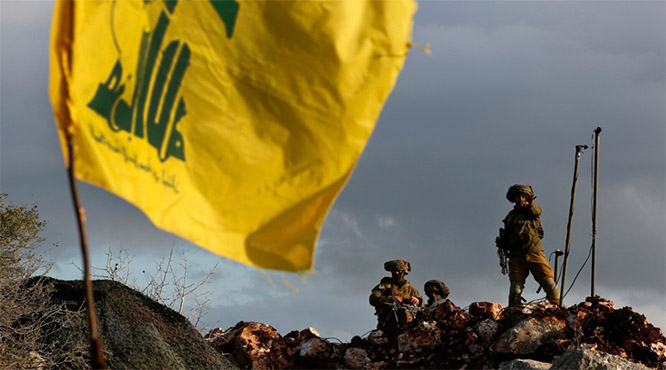Aug 23: A month after protests over new Israeli security measures at the al-Aqsa Mosque compound rocked occupied East Jerusalem, the tension between the Old City's Palestinian residents and Israeli security forces is still simmering due to Israel's policy of collective punishment.
According to prisoner rights group Addameer, 425 Palestinians were arrested from East Jerusalem in July alone. The majority of the arrests took place in the second half of the month following the installation of Israeli security measures at the entrances of the al-Aqsa Mosque compound.
The arrests have continued in August, following the success of what analysts described as the largest civil disobedience protests in recent Palestinian memory that eventually forced Israel to dismantle the metal detectors and CCTV cameras it had installed after only two weeks.
"They want to take revenge on the entire community," one resident of Bab al-Hutta neighbourhood in the Old City told Al Jazeera as Israeli border police arrested his neighbour one August evening.
Battle of the Gates
The "Battle of the Gates" as some Jerusalemites like to call it, began on July 14 when three Palestinian citizens of Israel from the city of Umm al-Fahm killed two Israeli police officers inside the entrance of Bab Hutta, just outside the al-Aqsa Mosque.
Israeli authorities first responded with closing down the entire compound for the first time since 1969, before installing metal detectors two days later.
Aware that the metal detectors represented not so much a normal security measure, but rather an assertion of Israeli control on al-Aqsa, Palestinians in Jerusalem waged an open-ended protest against the newly introduced measures.
The mass protests were characterised by their largely peaceful nature, which involved tens of thousands participating in sit-ins and prayers outside the entrances to the compound. These were often preceded and followed by chants that called for the liberation of Jerusalem and al-Aqsa Mosque, in addition to chants that condemned Israeli occupation and the perceived complicity of Arab governments with the occupation.
Given the absence of any political leadership, the question that begs to be asked is: what had made these protests, with the participation of tens of thousands of Palestinians, a success?
'Our sole breathing space'
The importance of the al-Aqsa Mosque compound and its status among Palestinians stretches beyond being a place of worship into a communal space.
"Al-Aqsa is like our own home and our sole breathing space," Zahra Qaws, a nurse and resident of the Afro-Palestinian community inside Jerusalem's Old City, told Al Jazeera.
"We don't just pray there," Qaws said. "We gather there, we rest and relax there, and our kids also play there. Separating us from al-Aqsa is like stripping us of our lungs."
The largest sit-ins protesting the metal detectors were held outside the Lions Gate and al-Majlis Gate, close to where the Afro-Palestinian community lives.
Describing the al-Aqsa compound as the only "respite" for Palestinian families living in the Old City who are prevented by Israeli forces from renovating or expanding their homes, Qaws said that when the protests started, the residents felt the immediate urge to support the sit-ins with all they had.
"People instinctively came out to support the protests and sustaining them by offering food, water, and a warm embrace to the protesters," she explained, mentioning that she had helped cook food for the protesters during the initial stages of the sit-in.
The idea to distribute food to the protesters, whose numbers gradually increased every day, came from a street vendor who belongs to the Afro-Palestinian community. The young man, whose name is withheld for safety reasons, donated the fruits and vegetables he usually sells on his cart to people joining the sit-ins.
Residents of the Old City took the idea one step further and in one communal act, began cooking meals and distributing food and fruits from their own homes to the protesters. This was followed by donations and prepared meals from Palestinian individuals and charities alike, as the numbers of protesters increased and vastly outnumbered the humble capacities of the Old City's residents.
Self-imposed ban
But what had made these sit-ins popular in the first place, according to East Jerusalem Palestinians, was their refusal to enter the al-Aqsa Mosque compound in its entirety, as long as the new Israeli security measures were still in place.
According to several protesters interviewed by Al Jazeera, the decision was taken up spontaneously by young men, many of whom refused to talk to the media in the wake of the Israeli crackdown on the protest movement.
The unwritten rule became mainstream after Omar al-Kiswani, manager of al-Aqsa Mosque and Islamic Endowment (Waqf) employee, was the first high-ranking Waqf official to refuse to enter the mosque through the metal detectors under popular pressure.
"Everyone misses praying inside the compound," Kiswani told local media at the time, "but we want to be able to enter with dignity and pride."
High spirits
During the sit-in, and under the sweltering July heat, protesters remained in high spirits even after Israeli repression. Praying on the streets or steps, encouraging one another after the prayers, and talking about the importance of steadfastness, protesters remained confident of the success of their movement.
The peaceful nature of the protests made it open to Palestinians from all walks of life and from all ages, including children, families and the elderly.
Jehad, who declined to give his last name, told Al Jazeera that the significance of the al-Aqsa Mosque compound to Palestinians was not just religious; it was also the epicentre of their lives.
"This is why many of us who are not religious and don't generally pray made sure to come and participate in the sit-ins," he said. "Some of those who came don't even know how to pray properly yet insisted on participating."
"Israeli forces would hit stun grenades at us when we were praying," Zinat al-Jallad, who has been frequently banned from entering al-Aqsa Mosque compound, told Al Jazeera. "But the more the repression increased, the harder they beat us, the more people joined the sit-ins."
No political rule
Sabrina Joudeh, who lives in the Palestinian Wadi Joz neighbourhood of occupied East Jerusalem, said that one of the reasons why the sit-ins were so successful was due to the protesters' refusal for any Palestinian politician to get involved, for fear of riding the wave for their own political gains and breaking up the grassroots movement.
"Even when Palestinian Authority President Mahmoud Abbas issued a statement in support of the protesters, they immediately started chanting against him," Joudeh said to Al Jazeera.
According to Abdelsattar Qassem, a professor of political science at the An-Najah University in Nablus, Abbas was dismissed by protesters because the PA's interests "are deeply intertwined with those of Israel's".
"Even the ostensible freezing of security coordination [between PA and Israel] was more of a decision for public consumption and an attempt by the PA to save face," Qassem said, labelling the government's support for the protests as a "form of rhetoric".
Abbas was not the only Arab leader to be chanted against. For many years, Arab leaders have used the Jerusalem cause to whitewash their oppressive rule and polish their own names, while simultaneously ignoring the plight of Palestinians in Jerusalem and their increasing marginalisation under Israeli occupation for decades. Saudi's King Salman, Jordan's King Abdullah and Egypt's President Abdel Fattah el-Sisi were not spared from the protesters' verbal barbs.
Strong spirit
Regarding the situation now, Joudeh said that Jewish settlers, mainly organised under the umbrella of right-wing ultra-nationalist groups such as the Temple Mount Movement, enter the compound on an almost daily basis under the protection of heavily armed Israeli military, and attempt to perform religious rites.
Their presence is viewed as a provocation by Palestinian worshippers and an attempt to disrupt the status quo, which according to an agreement signed between Israel and the Jordanian government after Israel's occupation of East Jerusalem in 1967, prohibits non-Muslim worship within the compound.
Jerusalem is simmering with confrontation, says Joudeh.
"In Jerusalem, the [Israeli] repression of Palestinians has increased notably," she said. "Random arrests, searches, destroying Palestinian cars for no reason, and arbitrary checkpoints have sprung up everywhere."
Joudeh said that despite these added restrictions and hindrances by Israeli authorities, the spirit of Palestinians in occupied East Jerusalem has never been stronger.
Despite the unprecedented success of the protest, Palestinians are not resting on their laurels.
"Through popular mobilisation, we managed to defeat Israel's plan to expand control over Al-Aqsa," said al-Jallad, who is still banned from entering Al-Aqsa despite the lack of an official order against her.
"But we also know that the battle has just started. Israeli authorities' attempts to Judaise the city will not stop, and we have to take advantage of our victory to escalate the resistance."










Comments
Add new comment